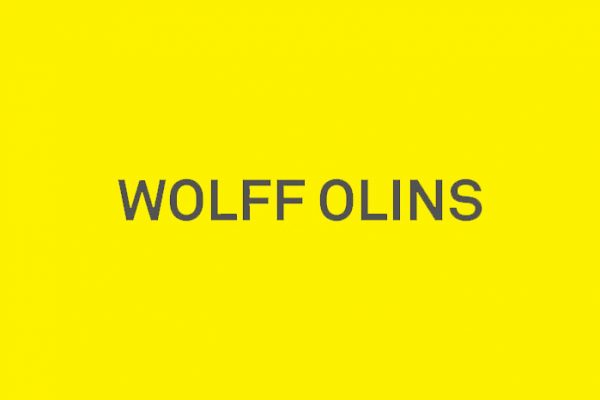Brant Long, Global Brand Director at property consultancy Jones Lang LaSalle discusses building a global brand from a decentralised business and explains what marketers can learn from TV’s The Wire.
Your logo and outfacing communications may be bold examples of corporate design, but the internal perception and management of any brand requires subtlety, sophistication and – on occasion – a degree of tact and diplomacy. Companies operating globally will be fully aware that what works in one territory can get lost in translation to another. Even without having to negotiate differences between languages and local culture, tensions can arise between commercial imperatives and creative freedom, particularly within a large, decentralised, service-led organisation reliant on the strength of its relationships.
These have been among the issues faced by Brant Long, Global Brand Director at property consultancy Jones Lang LaSalle. After a period of extensive growth through acquisition, the company now employs more than 40,000 people in 1,000 locations across 70 countries. That’s meant unifying the brand, maintaining its consistency and keeping staff around the world connected. To do this they use Brandworkz brand asset management software.
Going global
“The big challenge has been going from being a local business to thinking more globally,” says Long. “We’re trying to connect a lot of local businesses together – to find the common things they share. We realised that if we had a brand architecture that simplified things we’d get more wood behind the arrow and more efficiency out of our communications.”
Those objectives may sound simple enough. But how do you go about implementing them when you’re operating across 58 countries and regional websites in 24 languages? And, since much of Jones Lang LaSalle’s expansion was the result of acquisition, how do you get new staff on side without them feeling that they’re being monitored by the brand police?
For Long the answer involved focusing first on Jones Lang LaSalle’s intranet, which brought those diverse, global strands together and then, in conjunction with the company’s branding consultancy, thinking hard about the brand identity itself. Central to the project’s success was the ability for staff to share brand assets in a cloud-based brand management system run by Brandworkz.
The brand is central
The Brand Hub, Long explains, formed a centre where staff could view, share and engage with collateral, see how it was being used elsewhere within the organisation and offer their own contributions. Most importantly, it was designed to bring people in rather than impose corporate directives from on high. So what have been the advantages of this approach?
“What it means,” says Long, “is everything is visible. We can see, for example, the number of different service lines we have, and what we call them in different countries. When you start to see that you can start organising things better – we were able to start thinking about customer groups and then see how things cluster together naturally.”
With the brand’s new identity system rolled out globally, the next task was to undertake an audit in order to discover how staff were actually using those assets.
“Was there anything that was naturally strong, popular or useful?” says Long. “What was working for different businesses? And what was missing? We discovered that people wanted to see what other markets were doing. So in the US, people in Boston didn’t necessarily know what people in LA were doing. Like a lot companies, people maybe have a set of slides in a drawer somewhere, a shared drive in a local office, but in the past there hadn’t been a way to readily see things and share them quickly.”
The Brand Hub, Long explains, provided this, as well as housing a brand-book on the homepage which lets staff see examples of positioning and identity, thereby helping them to understand how images, colours, typefaces and so on could be used.
The benefits to employees of having clear, consistent guidelines on branding are clear enough. But what other practical advantages does a well-managed brand identity bring?
“Think, for example, about the fee you pay for stock photography,” says Long.”If anyone, anywhere, buys photography, you’re going to be spending a little here and there, but it all adds up.”
Long asked Getty to do a bit of investigation for him and was able to get a good idea of what Jones Lang LaSalle were spending on photography across six or seven countries. The answer, it turned out, was quite a lot. “So I was able to take that to my boss and say, ‘look, we’re spending ‘X’ dollars. Are we leveraging that and is someone with a proper art director’s eye looking at it to see if it’s all on-brand?’”
Centralising the spend on photography, he explains, and then spending that money wisely enables local offices to make savings which, when aggregated, swiftly become significant globally. “Our ROI isn’t one big number, but probably a lot of little numbers that’s going to add up. I’m confident that if I really had to parse the numbers and go down deeply, I could put a case together to show that it was definitely worth the investment.”
Business v creative
But what about the potential tension between business strategy and creative communication? Has Long found it easy to balance the two?
“I think anyone who works in the services industry faces that tension,” he says. “It’s much easier when you’ve got packaged goods in retail because there you have something tangible. You can adjust the chemical component of your detergent, say, and you know it’ll get those whites whiter. But when you’re dealing with a service, a people-based business built on 100 years of trust and you start talking about branding and marketing, people don’t always buy into it right away. If you’re a fee-earner or a highly qualified professional, your attitude might be, ‘I am the brand. I am the reputation of this company’. And reputation, of course, is what you’re trading on.” The challenge, he points out, is to keep that reputation fresh and relevant as new staff join and the organisation evolves.
“It’s about making individuals feel part of an institution, yet making that meaningful for them and not taking away their own identity. And of course there’s a further challenge – that the institution itself has some kind of identity or personality which not only works but remains flexible. You don’t want to take away its human side or make it too stringent and restrictive.”
Borrowing a term from TV’s The Wire, Long says it’s important that brand marketers have ‘soft eyes’: a sensitivity to local markets. After all, nuances in tone of content from, say, Poland or Vietnam, may be lost on a global manager working in London or Boston. When viewing content from an unfamiliar region, he says, “You don’t want to react right away. You want to have a conversation. You need to know something about the sensibility, the sense of humour, how the people we’re trying to communicate with are likely to respond. Local people after all, know best what the local market is.”
As commercial organisations evolve into global entities, this is likely to represent a key insight: success involves thinking globally, acting locally and understanding that, particularly in the service sector, brand awareness – and the brand and marketing asset management software which underpins that – will always be a significant differentiating factor.



